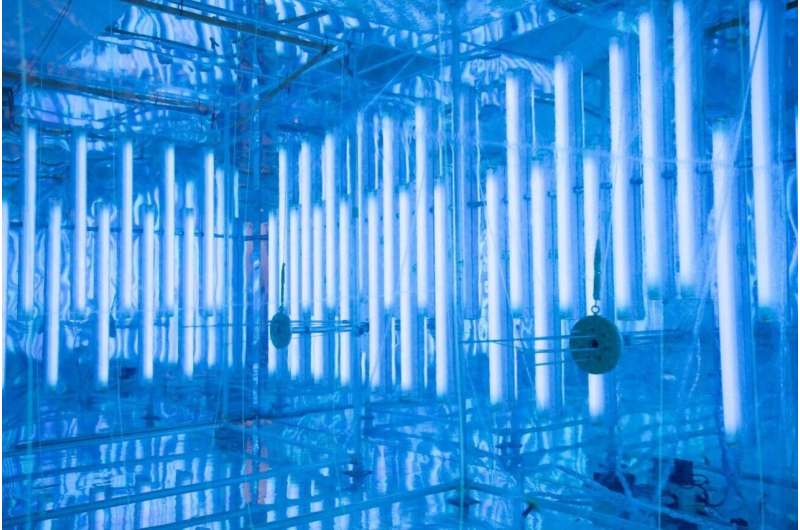This article has been reviewed according to Science X's editorial process and policies. Editors have highlighted the following attributes while ensuring the content's credibility:
fact-checked
peer-reviewed publication
trusted source
proofread
Implications of nonequilibrium behavior of isoprene secondary organic aerosol on cloud formation

Atmospheric aerosols play a significant role in Earth's climate. Understanding the formation of organic particles in the atmosphere is key to understanding cloud properties and formation, and as a result, unraveling future climate change. Isoprene, an organic compound, is produced by many plants and has a large impact on atmospheric chemistry and composition.
Previous studies have demonstrated that a rapid segregation of fresh and aged organic particulate matter, derived from tree emissions, has a significant impact on particle growth.
However, recent studies have shown that instantaneous gas-particle equilibrium partitioning assumptions fail to predict SOA formation, even at high relative humidity (~85%). Photochemical aging seems to be one driving factor.
A study, conducted by researchers from Pacific Northwest National Laboratory (PNNL), and published in Environmental Science & Technology, examined the minimum aging timescale required to observe nonequilibrium partitioning of semivolatile organic compounds (SVOCs) between the gas- and aerosol-phase at ~50% relative humidity.
Seed isoprene SOA was generated by photo-oxidation in the presence of effloresced ammonium sulfate seeds at < 1 ppbv NOx, aged photochemically or in the dark for 0.3–6 hours, and subsequently exposed to fresh isoprene SVOCs.
The team's results show that the equilibrium partitioning assumption is accurate for fresh isoprene SOA but breaks down after isoprene SOA has been aged for as short as 20 minutes, even in the dark.
Modeling results showed that a semi-solid SOA phase state was necessary to reproduce the observed particle size distribution evolution. The observed nonequilibrium partitioning behavior and inferred semi-solid phase state were corroborated by off-line mass spectrometric analysis on the bulk aerosol particles and confirmed the formation of organosulfates and oligomers.
The unexpectedly short timescale for the phase transition within isoprene SOA has important implications for the growth of atmospheric ultrafine particles to sizes relevant for cloud condensation nuclei formation, which could impact Earth's radiative balance.
The research team believes the next step is to design experiments that test whether SOA from mixtures of anthropogenic and biogenic volatile organic compounds behaves in a similar manner.
More information: Yuzhi Chen et al, Nonequilibrium Behavior in Isoprene Secondary Organic Aerosol, Environmental Science & Technology (2023). DOI: 10.1021/acs.est.3c03532
Journal information: Environmental Science & Technology
Provided by Environmental Molecular Sciences Laboratory




















